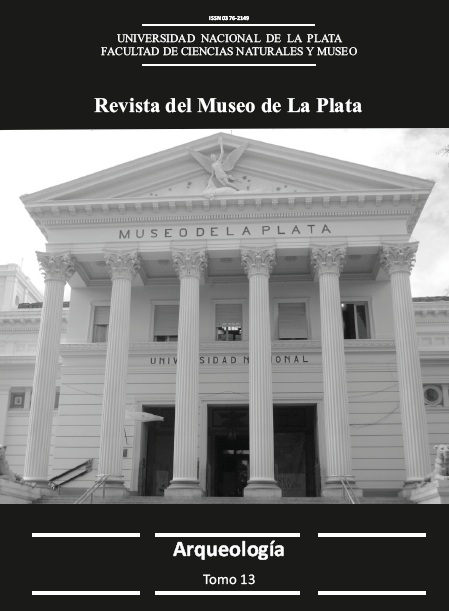Reconstrucción del paisaje arqueológico por muestreo bayesiano
Keywords:
Regional Sampling, Bayesian Analysis, Landscape Use, Hunter-gatherers,Abstract
In this paper we analyze a wetland section of the Samborombon Bay coast, occupied by hunter-gatherers-fishermen during the late Holocene. In an area of approximately 5 km2 , characterized by the presence of channels of estuarine regime, tala forest vegetation and grasslands, we conducted a sampling design using Bayesian resolution. The sampling aimed to find all possible occupations in the area. Incorporating information prior to analysis allowed defining the distance between sampling points with greater efficiency, minimizing the work required to cover a large area, as well as the risk of loss of potential findings. We summarize the methodology used, provide the results of this sampling methodology and discuss the intensity of human space use. The applied methodology in a sector with low archaeological visibility allowed us to have information about human occupation of the area, the characteristics of the archaeological record and the probable spatial distribution of different activities, in a reasonable time and low cost.Downloads
Published
Issue
Section
License
La publicación en la RMLP se realiza bajo los términos de la licencia de uso y distribución Creative Commons BY-NC-SA 4.0 para Argentina (https://creativecommons.org/licenses/by-nc-sa/4.0/) que permite a terceros la distribución, la copia y la exhibición del artículo siempre que citen la autoría del trabajo, la publicación en la RMLP, número concreto y las páginas en la que encontraron la información. No se puede obtener ningún beneficio comercial y no se pueden realizar obras derivadas con fines comerciales que no autorice la editorial. Si se remezcla, transforma o construye sobre el material, deben distribuir sus contribuciones bajo la misma licencia que el original.
La puesta a disposición del artículo en la RMLP supone para los autores argentinos el cumplimiento de lo establecido en la Ley 26899 de Creación de Repositorios Digitales Institucionales de Acceso Abierto, Propios o Compartidos, del 13/11/2013 en su artículo 5º, en lo relativo a la obligatoriedad de facilitar en acceso abierto los resultados de investigaciones financiadas por agencias gubernamentales y de organismos nacionales de ciencia y tecnología del Sistema Nacional de Ciencia, Tecnología e Innovación.










